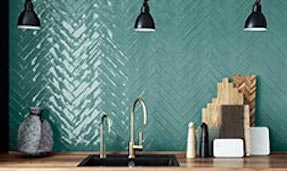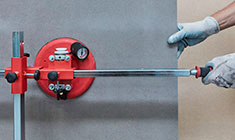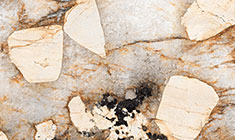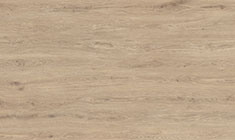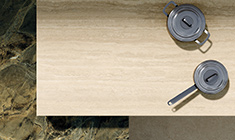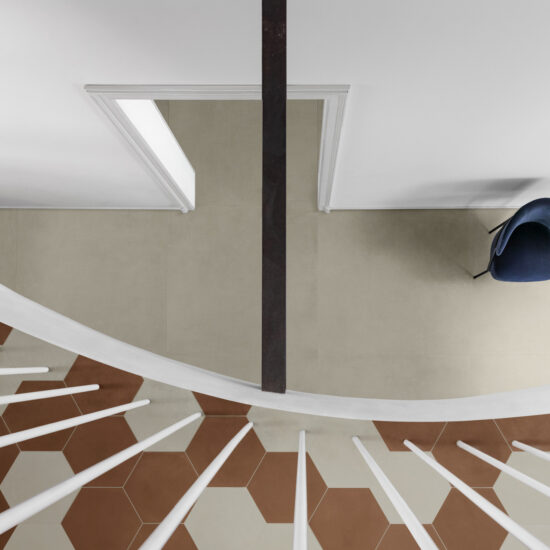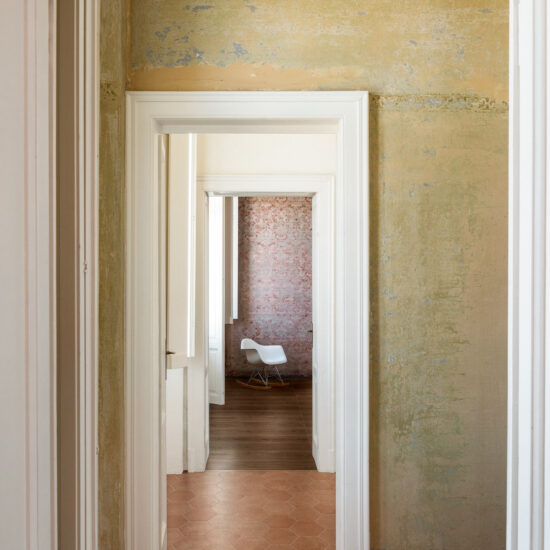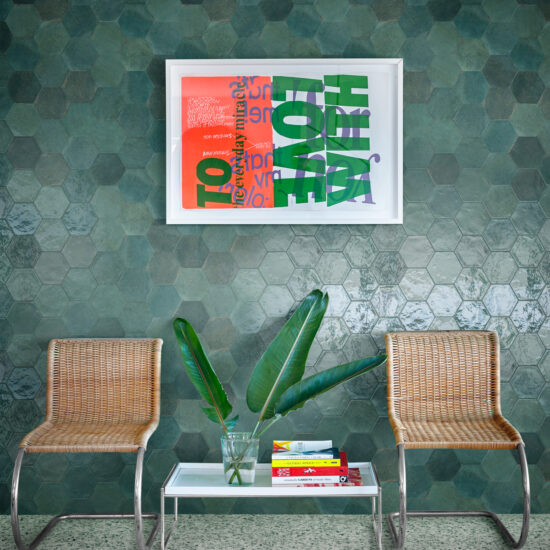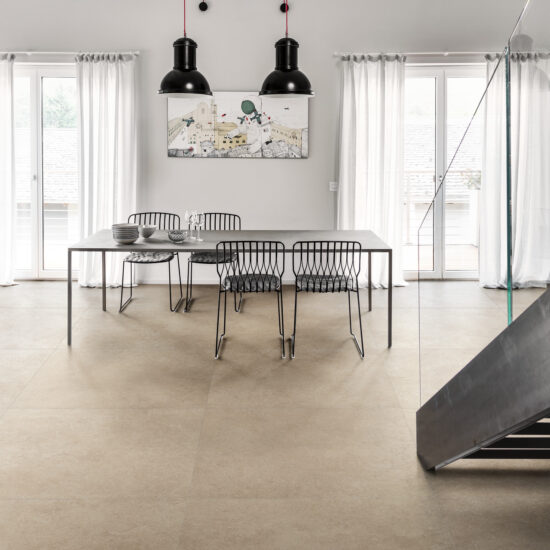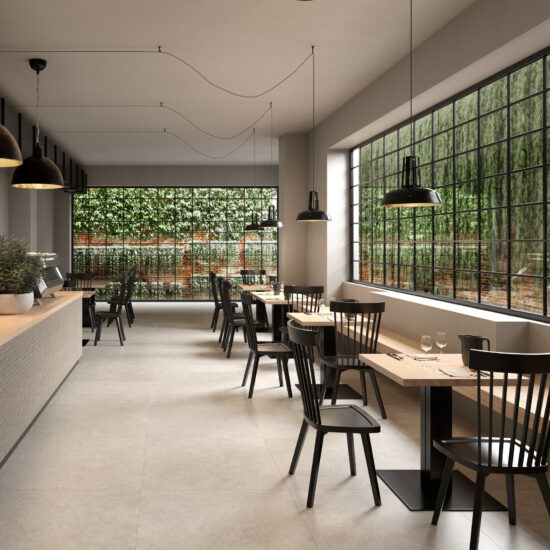In fact, when designing an interior the choice between square or rectangular tiles isn’t only an aesthetic consideration: it can also affect rooms’ perceived size and their practicality.
If you need advice and inspiration, with Marazzi you can explore a vast array of options to suit all styles and needs.
In this article, we’ll be answering the question: which are better, square tiles or rectangular ones? We’ll be analysing the benefits and characteristics of each shape, as well as a third creative option, hexagon tiles, to help you to pinpoint the perfect solution for your spaces.
Shapes available and their main characteristics
Choosing the right shape of tile is fundamental for defining the personality of every interior. Square, rectangular or hexagon: each option offers unique characteristics, suitable for different styles and needs.
Below, we analyse the distinctive features of each shape, with practical examples and suggestions from the Marazzi collections to help you to come up with the ideal solution.
Square tiles
Square tiles are a timeless classic, ideal for both small and large rooms. This shape is particularly versatile and suitable for a large variety of interior design styles. If you’re wondering whether square or rectangular tiles are better, bear in mind that with large square sizes, such as 75×75 cm, there are fewer joints, creating an effect of visual continuity.
Amongst the options on offer from Marazzi, the Mystone Limestone and Mystone Moon collections include square sizes from 60×60 cm up to 120×120 cm, with anti-slip surfaces that are also soft-touch thanks to the StepWise technology.
If you wish to use this shape’s potentials to create a natural look, on the other hand, the Slow collection, inspired by traditional terracotta, is an excellent solution.
Rectangular tiles
Rectangular tiles (planks and boards of various sizes) have always been viewed as modern and elegant and this shape is ideal for anyone wishing to enhance the appearance of rooms longer than they are wide, making them seem larger. Rectangular sizes like 20×120, 15×120 or 22.5×180 cm are perfect for creating interplays of light and adding an impression of elegant length to a space, in contrast with the square alternative, which gives rooms a more compact air.
For example, the Vero collection offers a contemporary interpretation of wood-effect parquet, with warm, welcoming surfaces. Installed parallel with or at an oblique angle to walls, rectangular tiles also emphasise a room’s natural daylight and mask any structural irregularities: the perfect choice for a contemporary version of timeworn parquet, with a subtle, sophisticated rustic touch.
A third option: hexagon tiles
If you’re looking for a creative solution that reaches beyond the usual choice between square or rectangular tiles, the hexagon shape could be right for you. The unique design of hexagon tiles – also known as honeycomb – is perfect for creating daring decorations and distinctive design schemes, bestowing personality on every surface.
For example, a collection like Cementum effectively reinterprets the concrete and terracotta effect in contemporary style, while ArtCraft celebrates the beauty of antique, traditional materials. Like vibrant, modern collections such as Lume, both these solutions exploit the contemporary appeal of hexagon tiles, ideal for combining with rectangular and square sizes to add a dynamic, original touch to your design schemes.
Comparison between square and rectangular tiles
The choice between square and rectangular tiles depends mainly on the characteristics of the location and the visual effect required: each shape has its own strengths and serves different needs, in both aesthetic and functional terms.
Here’s a practical guide to help you decide which option is more suitable for your project.
When to choose square tiles
Square tiles are ideal for small, well-proportioned interiors like compact bathrooms or kitchens, since their symmetrical shape helps to create a balanced, tasteful design. In practice, larger sizes can be very useful to reduce joints and make the surface more uniform, giving an impression of greater space.
When to choose rectangular tiles
Unlike compact, evenly proportioned square tiles, rectangular tiles are particularly suitable for large or elongated spaces, such as lounges, corridors and open-plan areas. In fact, their shape means you can be creative with installation patterns to make a room appear larger or emphasise the natural daylight, making them a perfect solution whose long, slender shape is their key feature.
Practical tips for making the best choice
Materials play a fundamental role when it comes to creating a mix with high aesthetic impact. Both well known for their quality, versatility and strength, porcelain stoneware and white-body tiles provide durable, easy-care yet elegant surfaces, ideal for meeting all stylistic and functional needs.
Therefore, the choice between square or rectangular tiles (or a combination of these two types) depends on the space’s characteristics and the aesthetic result required. Both shapes offer unique benefits, and with the Marazzi collections you can pick out porcelain stoneware and white-body tile solutions perfect for every need.
Mixing shapes for a unique effect
Combining square and rectangular tiles in the same room can be a creative, effective choice. For example, you can use square tiles for the main areas, such as lounges or living areas, and rectangular tiles to define functional zones like corridors or kitchen corners. With this strategy, you can create a visual distinction between the different parts of the home, adding variety and depth to spaces.
What’s more, a series of factors have to be assessed when choosing the ideal shape: one key consideration is the natural daylight, which may affect the surfaces’ appearance, not to mention the size of the interior and the furnishing style.
However, there are some common mistakes to be avoided. For example, using excessively small tiles in large rooms may generate an untidy visual effect and break up the surfaces’ continuity. Similarly, poor size and shape layout or the use of sizes and shapes inappropriate for the style of furniture may inevitably detract from the end result.
Explore the Marazzi catalogue and find out how to beautify your interiors with durable, elegant, high-quality tiles.


